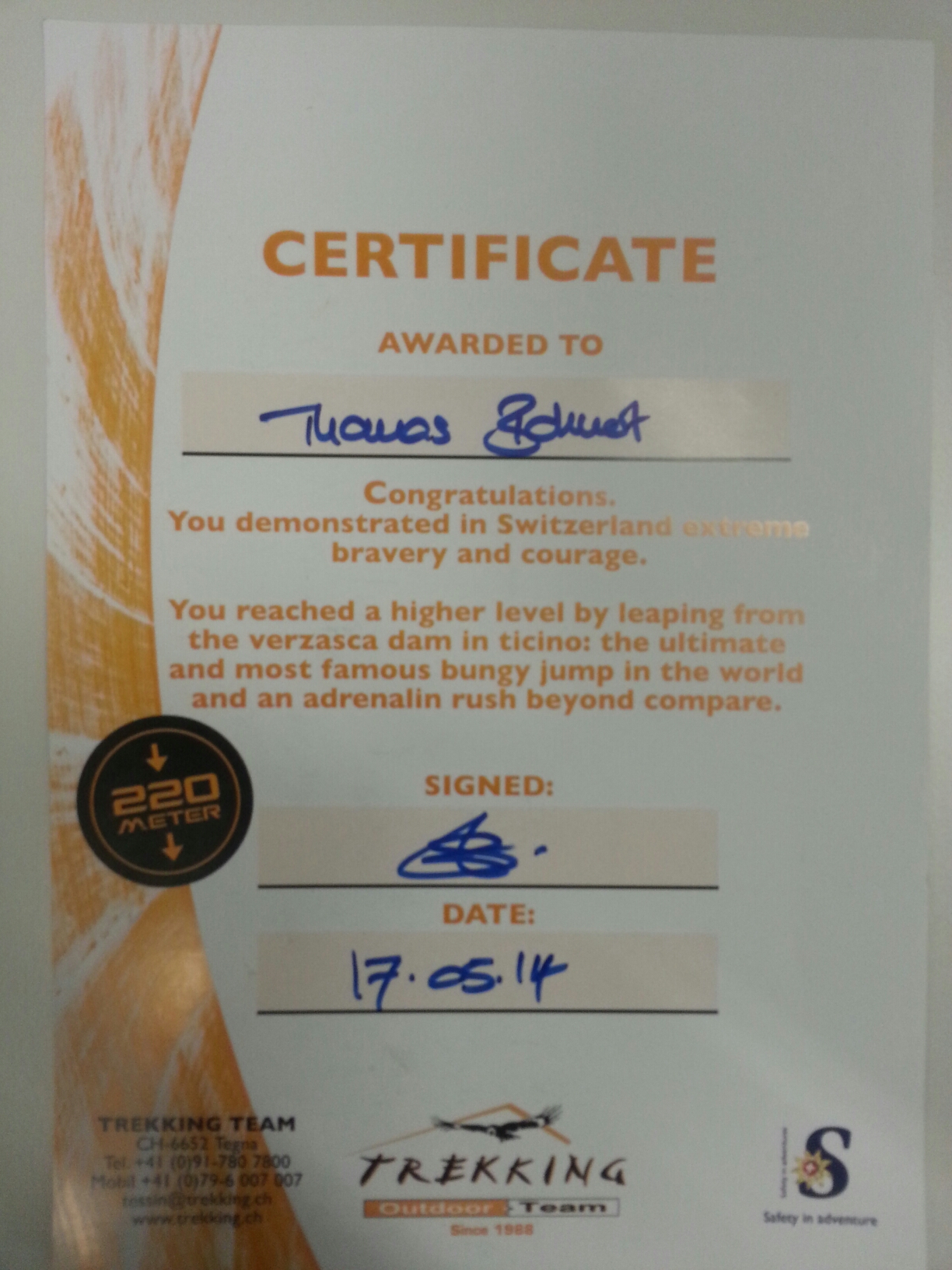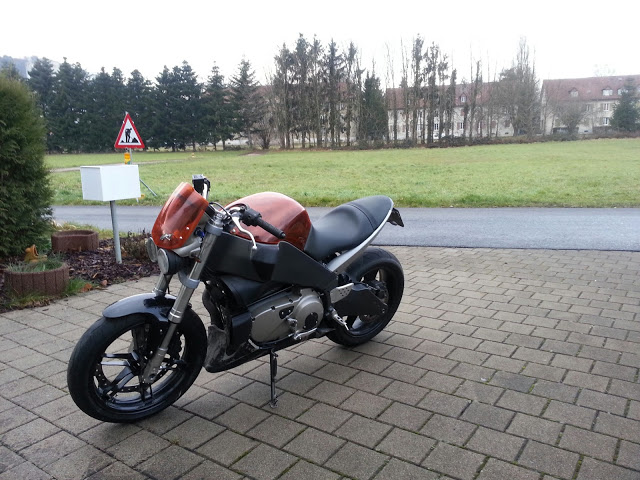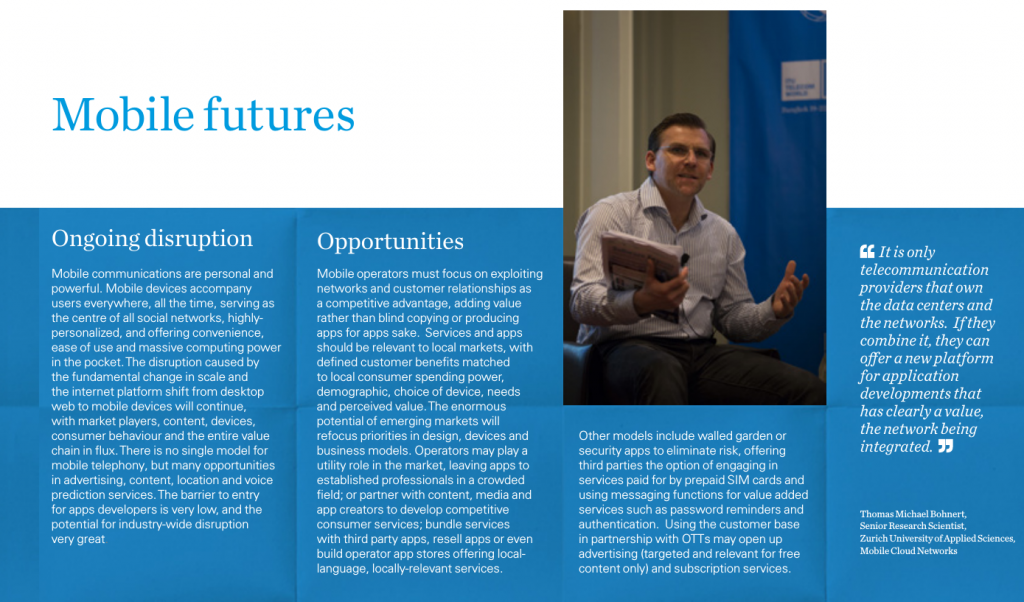Certifiaction that matters.
Archiv des Autors: tmb
TMBuell XB12s
No fear :: TMBond 007++
Running a WordPress-based Backup of your Blog in the RHCloud
The OpenShift-based RH-Cloud offers a whole variety of free services as part of the RHCloud community program. Among this list is cloud-based WordPress hosting.
After playing around for a while I was asking myself if it would be possible to run a backup of this blog (tmb.nginet.de) in the RHCloud. Idea was to instantiate a WordPress instance in the cloud and to automatically push content from this, my original blog (hosted by www.strato.de, for way too poor value-for-money, classic-lock-in) to the RHCloud-based clone whenever a new post comes up.
Installing the WordPress instance on top of the RHCloud services is trivial; it took less than 5m, most of which was required to find a proper name for the blog (blog-tmbohnert.rhcloud.com). It’s a true one-click-wordpress experience.
Another 5m later, the existing content was exported from tmb.nginet.de and imported to blog-tmbohnert.rhcloud.com, using the standard WP export/import plugin.
In order to push content automatically from the RHCloud-based WP-instance a content push plugin seemed to be the proper tool. There are quite a few of them available. A choice had to be made, between the NextScripts Social Networks Auto-Poster and Push-Syndication Plugins. Eventually, the former seemed to be the one powerful and at the same time more intuitive to use.
Conclusion. It took ~30m, from account registration, WP-installation, content export-import, plugin installation and configuration over writing of this post to have a fully-functional WP-clone in the RHCloud.
TMBuell 1125r
EUCNC 2014 workshop: Mobile Cloud Infrastructures and Services (MCIS)
Workshop Motivation and Background
This workshop addresses the three main topics that are significant for the realization of the Future Internet Architecture, which are the Mobile Networking, Network Function Virtualization and Service Virtualization.
While mobile communication networks have been established decades ago and are still continuously evolving, cloud computing and cloud services became a hot topic in recent years and is expected to have significant impact on novel applications as well as on ICT infrastructures. Cloud computing and mobile communication networks have been considered separate from each other in the past. However, there are various possible synergies between them. This trend supports the use of cloud computing infrastructures as processing platforms for signal and protocol processing of mobile communication networks, in particular for current (4G) and future (5G) generation networks. This enables several opportunities to optimize performance of cloud applications and services observed by mobile users, whose devices are connected to the cloud via wireless access networks. This trend is also in line with the emerging ETSI activities in Network Functions Virtualization (NFV). The “Mobile Cloud Infrastructures and Services” workshop focuses on the thematic area that the EU project MCN is concentrating on and is addressing emerging technologies in cloud services and mobile communication infrastructures. Emphasis will be put on possible integration scenarios and synergies between them.
Workshop Structure
Based on the successful format of the FUNEMS 2013, “Mobile Cloud Networking and Edge ICT “ workshop, we plan to have a good mix of invited keynote talks from key participants in the EU FP7 projects MCN, iJOIN, CONENT and FLAMINGO and peer-reviewed abstracts of the papers to be presented. Moreover, the panel organized in 2013 was highly appreciated by the participants and therefore is proposed to be part of the program in 2014. The speakers of the workshop will form the panel. During the panel session, the presented papers will be used as the starting point for the panel discussions. The programme associated with this workshop is as follows:
Mobile Cloud Infrastructures and Services session (200 minutes + 30 minutes break), Chair Thomas Michael Bohnert (Zurich University of Applied Sciences)
- Thomas Michael Bohnert (Zurich University of Applied Sciences), Welcome speech: EU FP7 Mobile Cloud Networking (MCN) (15 minutes)
- Anna Tzanakaki (University of Bristol) (Invited paper), Title of invited speech: “EU FP7 CONTENT: Virtualizing converged network infrastructures in support of mobile cloud services” (15 minutes)
- Peter Rost (NEC) (Invited paper), Title of invited speech: “EU FP7 iJOIN: Benefits and challenges of cloud technologies for ‘5G” (15 minutes)
- Filip De Turck (University of Gent) (Invited paper), Title of invited speech: “EU FP7 FLAMINGO: Network monitoring in virtualized environments” (15 minutes)
- Joao Soares (Portugal Telecom Inovacao), Andy Edmonds (Zurich University of Applied Sciences), Giada Landi (Nextworks), Luigi Grossi (Telecom Italia), Julius Mueller (Fraunhofer FOKUS), Frank Zdarsky (NEC Laboratories Europe), Title of presentation: “Cloud computing and SDN networking for end to end virtualization in cloud-based LTE systems” (20 minutes)
- Desislava Dimitrova (University of Bern), Lucio S. Ferreira (INOV-INESC | IST), André Gomes (University of Bern | One Source, Consultoria Informática Lda.), Navid Nikaein (EURECOM), Alexander Georgiev (CloudSigma), Anna Pizzinat (Orange), Title of presentation: “Challenges ahead of RAN virtualization” (20 minutes)
Coffee Break (30 minutes)
- Tarik Taleb (NEC Laboratories Europe), Marius Corici (Fraunhofer FOKUS), Carlos Parada (Portugal Telecom Inovacao), Almerima Jamakovic (University of Bern), Simone Ruffino (Telecom Italia), Georgios Karagiannis (University of Twente), Morteza Karimzadeh (University of Twente), Thomas Magedanz (Fraunhofer FOKUS), Title of presentation: “Virtualizing the LTE Evolved Packet Core (EPC)” (20 minutes)
- André Gomes (University of Bern | One Source, Consultoria Informática Lda.), Santiago Ruiz (Soft Telecom), Giuseppe Carella (TU Berlin / Fraunhofer FOKUS), Paolo Comi (Italtel), Paolo Secondo Crosta (Italtel), Title of presentation: “Cloud-based Orchestration of Multimedia Services and Applications” (20 minutes)
Panel discussions (60 minutes)
Previous Editions
The previous edition of this workshop was entitled: “Mobile Cloud Networking and Edge ICT Services”, and it has been organized during the FUNEMS 2013, http://www.futurenetworksummit.eu/2013/. The duration of the workshop was half a day and has been organised in two sessions. The current edition of this workshop will focus mainly only on one of these sessions, “Mobile Cloud Infrastructures and Services”. The workshop was successful and attracted a relatively high number of attendees compared to other parallel workshops. 25- 50 participants have been permanently in the room at the Mobile Cloud Networking and Edge ICT Services 2013.
Workshop Audience
The target audience will be the telecommunication infrastructures and cloud computing research and industry communities, with an emphasis on European FP7 project involved researchers and organizations. The workshop organizers are participating among others in the EU FP7 IP projects: Mobile Cloud Networking (MCN), CONTENT, iJOIN, FLAMINGO and in Standardization Bodies such as Open Networking Foundation and ETSI NFV (Network Function Virtualisation). It is therefore expected that a significant part of the audience and participants will be the communities involved in Standardization Bodies such as Open Networking Foundation and ETSI NFV and the EU FP7 projects that are and will be cooperating with the EU FP7 IP project “Mobile Cloud Networking” (MCN).
ITU Telecom World 2013 – Mobile Cloud Networking Session – Outcomes
About the Mobile Cloud Networking Session. In association with the Mobile Cloud Networking project.
Mobile Cloud Networks combine mobile communications with computing to run network functions in the cloud, enabling new business models at the inflection point between mobile and internet technologies. Running mobile network functions in the cloud reduces costs, and provides elasticity, scalability, on-demand provisioning, calibration and better performance. Operators need to invest in research and human capacity, innovating to create value in-house on this new platform, developing new apps and protocols without being locked in to equipment so is now, to manufacturers. avoid the risk of The losing time market to do space as cloud computing providers begin to move into networks the fusion of telecommunications and IT is not a one-way street.
The full report can be found here http://tinyurl.com/ojhthzw
VirtualBox tutorial dedicated to the creation of an distributed environment for Java developing
Background
This VirtualBox tutorial is about the creation of an distributed environment for Java developing. Background is, that I am teaching Advanced Java Programming (named PROG2 at ZHAW). Topics of the PROG2 lecture are:
- Multi-Threading (Basic and Advanced Threading Concepts)
- Input/Output (JDBC, File-IO, TPC/UDP, Client-Server)
- Testing (Mockups, Mokito)
- Graphical User Interfaces (Swing/AWT/Android)
Motivations for this tutorial do exist many, but the first and foremost was the desire to test networked Java applications in a (close to real) distributed environment.
Basic System Layout
The basic setup is inspired by the virtual environment proposed for a local OpenStack deployment, described in detail in tutorial „Creating a VirtualBox-based Test Infrastructure„. It consists of:
- One Master Node (aka Controller Node)
- Two Worker Nodes (Compute Nodes)
Basic System Configuration
- Hardware: VT Enabled PC
- Host Operating Systems: OpenSuse
- Virtualization: VirtualBox
- Virtual Networking: Host only connections. a VirtualBox concept for providing purely internal networks between your host and Virtual Machines
- Guest Operating Systems: Ubuntu Server (LTS or not doesn’t make a difference here)
Hardware Support for Virtualization
Whether or not your local host machine provides hardware support for Virtualization Technologies (VT, vmx or svm) can be found out by running this command in a terminal „cat /proc/cpuinfo |grep -E „vmx|svm““. Here is what I got on my Dell Ultrabook (VMX support is indicated in bold)
tmb@tmbuell:~> cat /proc/cpuinfo |grep -E „vmx|svm“
flags : fpu vme de (…) eagerfpu pni pclmulqdq dtes64 monitor ds_cpl vmx smx est (…) flags : fpu vme de pse tsc (…) ds_cpl vmx smx est flags : fpu vme de pse (…) monitor ds_cpl vmx smx est tm2 (…) bmi2 ms invpcid rtm flags : fpu vme de pse tsc msr (…) monitor ds_cpl vmx smx est tm2 ssse3
The Guest OS
tmb@tmbuell:~> less /etc/SuSE-release
openSUSE 13.1 (x86_64)
VERSION = 13.1
CODENAME = Bottle
# /etc/SuSE-release is deprecated and will be removed in the future, use /etc/os-release instead
Virtualization based on VirtualBox
Installing VirtualBox on OpenSuse is trivial using zypper and a terminal:
tmb@tmbuell:~> zypper install virtualbox
zypper search virtualbox
Loading repository data…
Reading installed packages…
S | Name | Summary | Type
–+——————————+——————————————–+———–
i | python-virtualbox | Python bindings for virtualbox | package
i | virtualbox | VirtualBox is an Emulator | package
| virtualbox | VirtualBox is an Emulator | srcpackage
i | virtualbox-devel | Devel files for virtualbox | package
| virtualbox-guest-kmp-default | Guest kernel modules for VirtualBox | ackage
i | virtualbox-guest-kmp-desktop | Guest kernel modules for VirtualBox | package
| virtualbox-guest-kmp-pae | Guest kernel modules for VirtualBox | package
i | virtualbox-guest-tools | VirtualBox guest tools | package
i | virtualbox-guest-x11 | VirtualBox X11 drivers for mouse and video | package
| virtualbox-host-kmp-default | Host kernel module for VirtualBox | package
i | virtualbox-host-kmp-desktop | Host kernel module for VirtualBox | package
| virtualbox-host-kmp-pae | Host kernel module for VirtualBox | package
i | virtualbox-qt | Qt GUI part for virtualbox | package
| virtualbox-websrv | WebService GUI part for virtualbox | package
Viruaal Machine Creation and Configuration
The selected environment requires the creation of several VMs, whereas most of them do share the same basic characteristics and configuration. A smart approach is to configure and then to use „Cloning“ to create duplicates.
Since we’ll have several VMs that are associated with each other we have to configure a set of Virtual Networks. For that launch Virtual Box, navigate to File>Preferences>Network. Then choose the option to add „Host-Only Networks“. Create three Host-Only Network Connections; Vboxnet0-Vboxnet2.
Configure Vboxnet0 with IPv4 Address 10.10.10.1 and IPv4 Network Mask 255.255.255.0, Vboxnet1 with IPv4 Address 10.20.20.1 and IPv4 Network Mask 255.255.255.0, and Vboxnet2 IPv4 Address 192.168.100.1 and IPv4 Network Mask 255.255.255.0.
Stay Tuned, More To Come On
Network Configuration, SSH Access, Port Forwarding, Guest installation, Sharing between Guests and Guest, and Guest and Hosts (Shared Folder, USB, SFTP), Guest Additions, Java installation, Git and GitHub
Aus China. Der Drache lehrt: wer hoch steigen will, muß es gegen den Wind tun.
The 9th IEEE Broadband Wireless Access Workshop co-located with IEEE Globecom 2013
Report provided by Patrick Marsch, Nokia, Andreas Maeder, NEC Laboratories Europe, Arun Ghosh, AT&T Labs, Giridhar K, IIT Madras, Peter Fertl, BMW Group Research & Technology.
The 9th International Workshop on Broadband Wireless Access (BWA), in co-location with IEEE Globecom 2013 in Atlanta, US, marked the successful continuation of what has become the most renowned workshops series alongside IEEE communications conferences. The series aims at bringing together leading experts from academia and industry to discuss latest research and trends in a particularly focused and interactive way.
The organizing committee of the 9th BWA has been:
- General Chairs: Patrick Marsch, Nokia Solutions and Networks, and Andreas Maeder, NEC Laboratories Europe.
- TPC Chairs: Arun Ghosh, AT&T Labs, Giridhar K, IIT Madras, and Peter Fertl, BMW Group Research & Technology.
- Steering Committee: Thomas M. Bohnert, Zurich Univ. of Applied Sciences, Dirk Staehle, DOCOMO Communications Laboratories Europe, and Gabor Fodor, Ericsson Research.
This year, the workshop attracted 85 paper submissions, out of which 31 were accepted for publication, yielding an acceptance ratio of 36%. With about 50 participants, the workshop was one of the most successful instances since the beginning of the series.
Out of the accepted papers, 20 were presented in oral form in four technical sessions:
Novel PHY techniques, e.g. looking into novel multi-carrier techniques, modified OFDM approaches or faster-than-Nyquist signaling
Novel MAC techniques, e.g. focusing on scheduling and MAC design in wireless multi-hop or mesh networks
Multi-antenna and cooperative communications, investigating interference alignment, millimeter-wave beam alignment and cooperative relaying
Spectrum, cognitive radio and HetNet, e.g. covering spectrum sensing or power allocation in cognitive networks, or dual connectivity and network selection in heterogeneous networks
The remaining 11 papers were presented as posters, including short teaser talks, and covering a wide range of topics like SON, context-aware mobility management, demand control, propagation and deployment.
The paper presentations were complemented with five invited speeches from renowned representatives of mobile network operators, network vendors and academia. All speeches were focused on the future of broadband wireless access, in particular the upcoming 5th generation of cellular communications.
In the first speech from Hank Kafka, VP Radio Access & Devices, AT&T, already the title “The Next Next Generation” reminded that just lately LTE was introduced as a next generation – and defined by its abbreviation to be of longer-lasting nature – so that the introduction of yet another generation has to be carefully considered. After highlighting the current data traffic growth and consequent network densification, Hank stated future network requirements, like increased spectral efficiency, substantially more devices, and lower cost. He touched potential solutions like massive MIMO or novel PHY and MAC approaches, but emphasized that any non-backward-compatible technology would have to deliver substantial gains in spectral efficiency, throughput and cost to be justified, considering the large recent operator investments into LTE-A.
The next speaker, Bill Payne, VP Small Cells and CDMA, Nokia Solutions and Networks, emphasized the strongly expanded application space beyond 2020. For instance, the Internet of Things with trillions of connected devices and the usage of wireless connectivity for industrial or vehicular traffic automation will offer new business opportunities, but also pose severe novel communications requirements, like latency, reliability or strongly reduced device cost and power dissipation. Bill stated that 5G will require both an evolution of existing technologies like LTE-A and Wi-Fi as well as novel radio access technologies designed to meet the very different nature of future application needs. As examples of such technologies, Bill gave an insight into the novel enhanced local area and mmWave technology NSN has been investigating in the last years.
Gerhard Fettweis, Vodafone Chair Professor, TU Dresden elaborated in detail on the novel use cases that may define 5G, like user-specifically rendered 3D, augmented reality, industry automation for user-tailored products, and traffic control. He emphasized that 5G will be about using wireless communications not only for content, but also for steering and control, and stated the key 5G requirements as throughput, latency and reliability. Gerhard discussed solutions to meet these requirements, such as generalized frequency division multiplexing (GFDM) as an enabler for lower air interface latency. He concluded his talk by pointing out the interesting future question of where in the infrastructure data and applications should reside in the context of e.g. low latency, and the potential necessity to “hand over” applications between network nodes.
Gabor Fodor, Master Researcher, Ericsson, pointed out that network nodes and devices may converge towards similar complexity, and that we will see much more transmission modes beyond 2020, including e.g. device-to-device communication. He emphasized that 5G may evolve from the classically decoupled concepts of uplink and downlink to an optimization of two-way communication incorporating network coding and network information theory. Gabor also touched various other research fields of Ericsson, like massive MIMO, shared spectrum access and mmWave technology.
Chih-Lin I, Chief Scientist Wireless Technologies, China Mobile Research Institute put an emphasis in her speech on the aspect of energy efficiency, and highlighted the paradigm change from designing wireless communications for optimized spectrum efficiency to jointly optimized energy efficiency and spectrum efficiency. She considered “Green and Soft” as the key words for BWA in the future. Specifically, she highlighted 5 key focus areas in China Mobile’s research effort: Rethink Shannon, Rethink Ring and Young, Rethink Signalling and Control, Invisible Base Stations, Small Cell New Spectrum. Chih-Lin also stated massive MIMO and Full Duplex as topics of interest for 5G, and provided some detailed considerations on an irregular antenna array her institute is designing.
The workshop was concluded by a panel discussion among the invited speakers, moderated by Patrick Marsch from Nokia Solutions and Networks. It started with the question which future application requirements would justify novel, non-backward-compatible wireless technologies. The panelists agreed on latency as a clear case, while reliability may be achieved through an evolution of existing technology. Also the need for device-to-device communications was stated, but here the operators commented that the business case behind this was not clear yet. Regarding expected technology disruptions, the panelists concluded that air interface modifications, mmWave technology, system architecture and protocol stack would be most likely fields. The speakers then elaborated on whether there can be a “one-size-fits-all” approach in 5G, able to address all requirement dimensions throughput, latency, reliability and power/cost, or whether there will be technologies optimized for specific use cases. Nobody was able to precisely answer this question, but the operators emphasized the need for compelling business cases to justify dedicated radio access technology only for some use cases. After venturing into the topic of spectrum usage, the panel was concluded with an outlook on how the wireless communications ecosystem may change beyond 2020. It was for instance discussed that network vendors may face the challenge of moving towards a consumer market as the number of base stations starts equalling that of devices, but that edge computing may be a novel business opportunity for both network vendors and network operators.
At this point, we would like to express our sincere gratitude to all persons who have made this workshop a great success, such as the Technical Program Committee which has mastered a total of 255 paper reviews, Matthieu Bloch, Kwang-Cheng Chen and John Barry as the overall workshop chairs for Globecom 2013, which have been very responsive and supportive, as well as the session chairs and invited keynote speakers and panelists.








